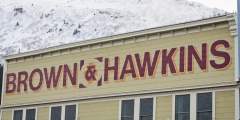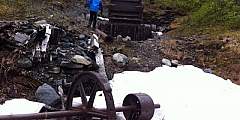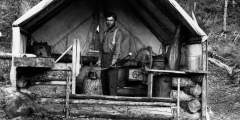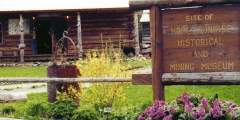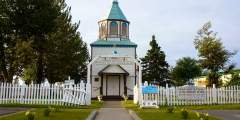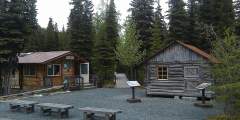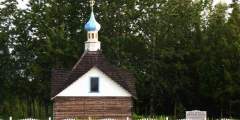Kenai Peninsula Historic Park or Site
Step into the past and explore the captivating historic parks and sites of the Kenai Peninsula. Immerse yourself in the stories of the gold rush and learn about the brave pioneers who have shaped this remarkable region.
Show Map
Historic Park or Site
Quick: what’s the longest combined rail and highway tunnel in North America? It’s the Anderson Memorial Tunnel, and you’ll drive through it on the scenic and historic drive to Whittier. The Kenai Mountains-Turnagain Arm National Heritage Area is a place whose valleys and mountains, communities and people tell the larger story of a wild place and a rugged frontier. This audio guide gives you the inside scoop on its fascinating history. You’ll… ...more
Palmer Creek and the road that follows it were named after George Palmer, who in 1894 first discovered gold on its banks. The creek was the site of early placer mining and later lode mining. Evidence of the historic Lucky Strike and Hirshey mines, as well as the Swetmann camp, can be found along trails that lead to Palmer Lakes. Several hiking trails are accessible from the Palmer Creek Road.
Although this cabin is not accessible from the road system, it bears mentioning as a National Historic Site in the Corridor. Harry A. Johnson arrived in Seward in 1904 from Erie, Pennsylvania. A 30-year-old blacksmith, he came north to help build the railroad.
The Hope-Sunrise Historical and Mining Museum exhibits photographs and artifacts of the Turnagain Arm Gold Rush of 1896 and the years since.
Built between 1894 – 96, the Holy Assumption Orthodox Church is the most enduring example of Russian culture in south central Alaska. For the Kenaitze Indians, who once comprised a significant portion of the population, this church constituted a major link to western culture. A simple, wood-frame structure with clapboard siding, Holy Assumption Church features a square two-story bell tower and a distinctive crown-shaped cupola, both with the… ...more
The Kenaitze Indian Tribe’s Dena’ina ancestors, recognizing the abundance of the place called Yaghanen, “the good land,” settled along the banks of its rivers and Tikahtnu (Cook Inlet). In the past several years, one location the Kenaitze Tribe has focused on is Sqilantnu, meaning “the grocery store,” located in the area now called Cooper Landing. Today, Kenaitze Indian Tribe partners with the Chugach National Forest to preserve, protect and ...more
In 1906 the chapel was built to honor Father Igumen Nicolai and Makary Ivanov. Fr. Nicolai, Kenai’s first priest, brought small pox vaccine, which saved the lives of hundreds of Dena’ina. The chapel is on the site of the original 1849 church, located in the northwest corner of the Russian fur trading post of Fort St. Nicholas.


